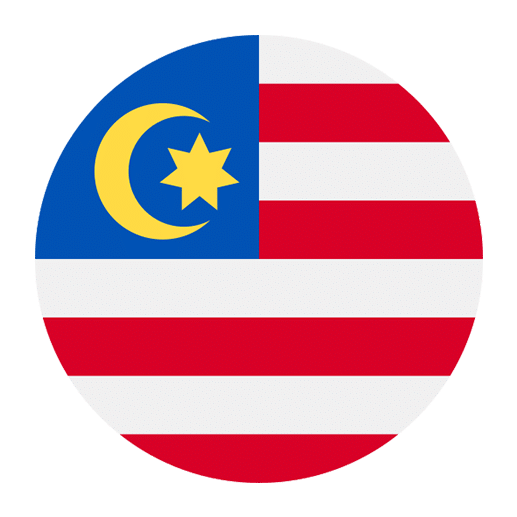Traditional Malay clothing is a fascinating aspect of the rich cultural tapestry of Malaysia. For language learners, understanding the vocabulary related to traditional Malay attire can provide deeper insights into the culture and traditions of the Malay people. Whether you’re planning to visit Malaysia, interested in its culture, or learning the Malay language, expanding your vocabulary with terms related to traditional clothing can be both educational and enjoyable.
Men’s Traditional Malay Clothing
Baju Melayu
The cornerstone of traditional Malay menswear is the Baju Melayu. This classic outfit typically consists of a long-sleeved shirt and matching trousers. The shirt is often worn untucked and extends to the hips, providing a loose and comfortable fit. An essential accessory that accompanies the Baju Melayu is the kain samping, a piece of cloth wrapped around the waist.
Songkok
An iconic part of Malay male attire is the songkok. This headgear is usually black and made of felt. Worn on special occasions such as weddings and religious events, the songkok symbolizes respect and tradition.
Seluar
The trousers worn with the Baju Melayu are called seluar. These trousers are typically made from the same material as the shirt and are designed to be comfortable and allow for free movement.
Kain Samping
The kain samping is an essential component of the Baju Melayu. This piece of cloth is usually about a meter in length and is wrapped around the waist, falling to the knees. The kain samping is often made of silk or songket, a traditional handwoven fabric with gold or silver threads.
Keris
While not clothing per se, the keris is an important accessory often associated with traditional Malay attire. The keris is a ceremonial dagger with a distinctive wavy blade, symbolizing bravery and honor.
Women’s Traditional Malay Clothing
Baju Kurung
For women, the traditional Malay costume is the baju kurung. This outfit consists of a long, loose-fitting tunic worn over a long skirt known as the kain. The baju kurung is elegant and modest, making it suitable for various occasions.
Selendang
A versatile accessory for women is the selendang, a long scarf or shawl that can be draped over the shoulders or wrapped around the head. The selendang adds a touch of elegance and is often used to complement the baju kurung or other traditional outfits.
Kebaya
Another iconic piece of Malay women’s clothing is the kebaya. The kebaya is a more fitted blouse that is often paired with a sarong. It is known for its intricate embroidery and lacework, making it a popular choice for special occasions.
Kain Sarong
The kain sarong is a versatile piece of cloth worn by both men and women. For women, it is usually paired with the kebaya or baju kurung. The sarong is wrapped around the waist and can be tied in various styles, offering both comfort and elegance.
Tudung
The tudung is a headscarf worn by Malay women as a symbol of modesty and religious observance. It is an integral part of the traditional Malay dress code and is available in various styles and colors.
Fabrics and Materials
Songket
One of the most luxurious fabrics used in traditional Malay clothing is songket. This handwoven fabric is often embellished with gold or silver threads, creating intricate patterns that shimmer beautifully in the light. Songket is commonly used for kain samping, kebaya, and other ceremonial garments.
Batik
Another popular fabric is batik, known for its vibrant patterns and colors. Batik is created using a wax-resist dyeing technique, resulting in unique and intricate designs. It is commonly used for both men’s and women’s clothing, including baju kurung, baju Melayu, and sarongs.
Satin and Silk
For a more luxurious feel, satin and silk are often used in traditional Malay clothing. These materials are smooth, shiny, and drape beautifully, making them ideal for special occasions and formal events.
Occasions for Traditional Malay Clothing
Weddings
Traditional Malay clothing is often worn during weddings, where the bride and groom don elaborate outfits made of songket or other luxurious fabrics. The baju kurung or kebaya for the bride and the baju Melayu for the groom are often adorned with intricate embroidery and accessories.
Religious Festivals
During religious festivals such as Hari Raya Aidilfitri and Hari Raya Haji, traditional Malay clothing is commonly worn. These occasions call for special attire, with families often coordinating their outfits in matching colors and patterns.
Cultural Events
Traditional Malay clothing is also worn during cultural events, such as dance performances, traditional ceremonies, and official functions. These events provide an opportunity to showcase the beauty and elegance of Malay attire.
Understanding the Vocabulary
Learning the vocabulary related to traditional Malay clothing can enrich your cultural knowledge and enhance your language skills. Here are some key terms to remember:
– Baju Melayu: Traditional Malay men’s attire consisting of a long-sleeved shirt and trousers.
– Songkok: A black felt headgear worn by Malay men.
– Seluar: Trousers worn with the Baju Melayu.
– Kain Samping: A piece of cloth wrapped around the waist, worn with the Baju Melayu.
– Keris: A ceremonial dagger with a wavy blade.
– Baju Kurung: Traditional Malay women’s attire consisting of a long tunic and skirt.
– Selendang: A long scarf or shawl worn by women.
– Kebaya: A fitted blouse often paired with a sarong.
– Kain Sarong: A versatile piece of cloth worn by both men and women.
– Tudung: A headscarf worn by Malay women.
– Songket: A luxurious handwoven fabric with gold or silver threads.
– Batik: A fabric known for its vibrant patterns and colors, created using a wax-resist dyeing technique.
– Satin and Silk: Smooth and shiny materials used for special occasions.
Conclusion
Traditional Malay clothing is a beautiful expression of the culture and heritage of the Malay people. By learning the vocabulary associated with these garments, you can gain a deeper appreciation for the traditions and customs that have been passed down through generations. Whether you’re exploring the language, planning a visit to Malaysia, or simply interested in cultural studies, understanding these terms will enrich your experience and knowledge. So, take the time to familiarize yourself with these words and embrace the elegance and charm of traditional Malay attire.

